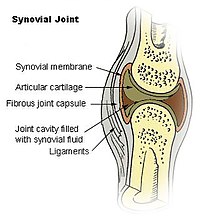Image via Wikipedia
The foot is an engineering marvel that cannot be duplicated by robotics. It is composed of 26 bones, 33 joints and around a hundred tendons, ligaments and muscles of various sizes, well oiled and sliding smoothly over each other.
The foot is encased in thick and leathery skin that protects it from injury. Our feet take us everywhere from the time we first learn to walk till we are finally laid to rest. Yet, somehow, we tend to take our feet for granted until they malfunction, cause pain or refuse to perform as instructed.
Some orthopaedic abnormalities of the feet, like clubfoot, flat feet, congenitally dislocated hips or knock knees, are present from birth. Sometimes shoes may be purchased for conformity to fashion disregarding the requirements of the feet. They maybe ill fitting, too tight or too large. Pointed toe stilettos are notoriously guilty. The gait becomes abnormal as pressure is applied unevenly to the skin of the foot. Irregularity may also occur in old age as a result of arthritis or injury.
When pressure is exerted unevenly on the foot, the skin tends to thicken abnormally. This callused skin may remain like that or develop into a corn. This happens in areas where the skin is rubbed persistently or where the skin is under uneven pressure. Common places are the heel, the ball of the foot and the sides of the toes.
The skin over the unsightly hardened area on the foot, a callus, is dead. So there is no inflammation or pain. Eventually the callus may harden to form a corn. The corn has a central area of inflammation and is painful and tender. It is usually situated near the base of the fifth toe. If the feet are pushed into tight fitting shoes, corns will form between the toes as well. Perspiration and moisture cannot escape from this area causing the corn to become macerated and tender.
If a callus or corn is beginning to develop, the first step would be to determine if there is any source of pressure which has set off the thickening of the skin. Sometimes it may even be due to a sudden increase in the level of exercise or interest in some new sport. Once the cause has been identified it should be removed, or else the callus will exacerbate.
The foot should first be soaked in warm water with rock salt and commercially available liquid soap. After 10 minutes the affected area should be gently rubbed with a pumice stone or a foot scrubber. Some baby oil or moisturiser should then be applied. This gets rid of the corn (or callus) at an early stage.
If the callus is hard and the punctum or tip of the corn is easily visible, commercially advertised OTC (over the counter) corn plasters may be used. Most of them contain salicylic acid — a keratolytic agent that softens and breaks down hard skin. They need to be applied on a dry foot and left in place till the corn softens and falls out. They should not be used on soft corns between the toes.
Wearing loose footwear with low heels and a well-cushioned insole can also relieve the pain. Slippers should be made of soft rubber like MCR (micro cellular rubber). Acupressure slippers are also helpful.
If the corn does not respond to these simple measures, it has to be surgically removed. A qualified dermatologist or surgeon can do it as an outpatient office procedure.
Newer, relatively painless techniques involve freezing the corn with liquid nitrogen or dry ice or removing it with laser technology. It is dangerous to perform “home surgery” — slicing off the corn with a knife or blade. Dangerous debilitating infections can occur due to such amateur attempts.
Diabetics need to take particular care of their corns and calluses and consult their physicians if they have a problem. They may have compromised blood supply to their feet or numbness of the nerves. This may make them insensitive to the pain making them inadvertently ignore the corn. Any self-treatment (especially salicylic corn plasters) is likely to result in dangerous infection.
Some simple rules one should follow:
• Wear proper footwear and socks
• Wash the feet well at night before going to bed
• Moisturise the feet with oil or cream once a day
• Keep the areas between the toes dry, particularly after a bath
• Treat arthritis, blisters, corns and calluses promptly
Appropriate footwear for various sports should be used. One pair of “canvas” shoes should not be used for all activities.
You may click to see more information on Corns and Calluses
Sources: The Telegraph (Kolkata, India)
Related articles by Zemanta
- Corns and calluses – All Information (umm.edu)
- Foot pain – All Information (umm.edu)
- Esquire: Your Feet: A Troubleshooting Guide (esquire.com)
- Tips for Diabetic Foot Care (brighthub.com)
- Sorry, Corn Refiners: ‘Corn Sugar’ Already Taken (mindbodygreen.com)
- The not-so-sexy side of stilettos (timesunion.com)
- Values Voters, Corn Sugar, Reading ‘Playboy’ To The Blind (npr.org)
- The Bad Shoes and the Women Who Love Them Review (princessdominique.com)






